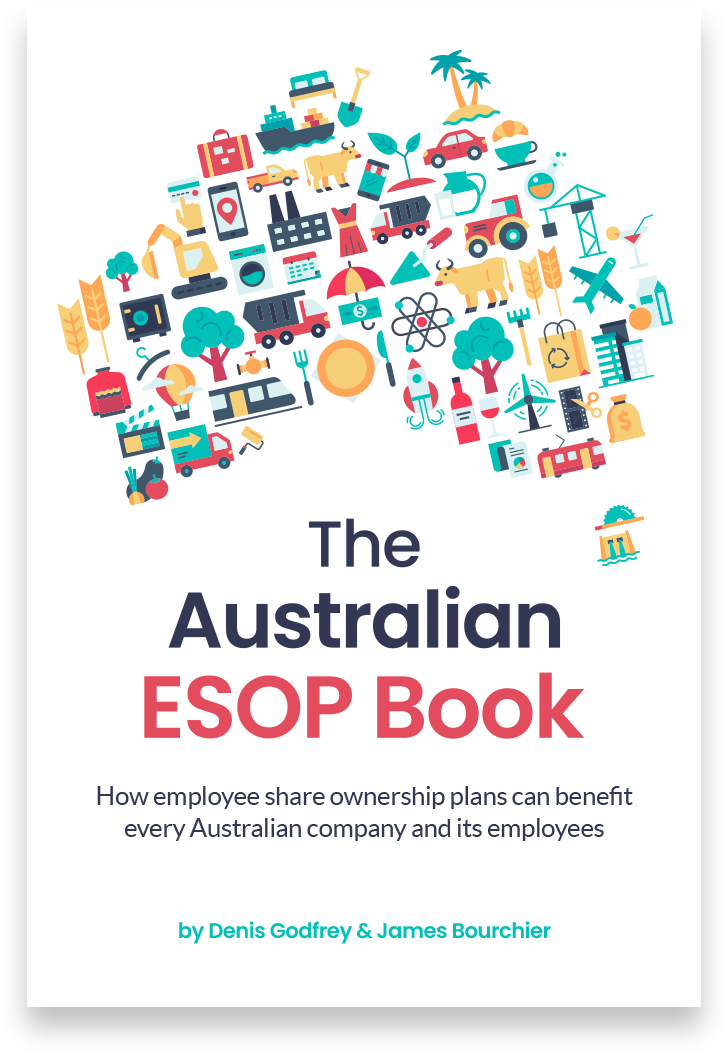10 steps to a successful ESOP
The steps below should lead to the successful implementation of an ESOP. They outline the systems, services and tools to maximise success and minimise potential costs and burdens.
Implementation of an ESOP is most successful with an internal champion to lead and drive the process.
1. Understand the Basics
First, become acquainted with the main ESOP alternatives. Other materials on this website should provide sufficient preliminary information to get you started. Don’t be tempted to google ESOPs, as most of the information will have an American bias and will therefore not be aligned with the Australian regulatory and tax environment, including specific taxation concessions.
2. Engage with Management and the Board
Once you have a basic understanding of ESOPs the next step is to canvass members of the senior leadership team to ascertain if they see such a plan as being relevant for the company. If so, then the board should be approached to see if there would be any objections to developing an ESOP recommendation to be brought to the board for consideration.
3. Develop Guidelines for Your Company’s ESOP
Before progressing further, it can be helpful to develop guidelines in relation to the design of your company’s ESOP. Aspects to consider could include:
- Which employee groups should be eligible to participate,
- What is the primary purpose of the ESOP e.g. reward long service, replace cash bonuses, help employees to become owners of the company, sharing wealth creation without risk, cash savings for the company, reducing employment costs through improved tax deductions etc.
- Should the ESOP involve little, if any, cost to the company or is the company prepared to invest in the plan,
- How long should participants be expected to hold equity,
- Should employees be given opportunities to contribute pre or post tax funds,
- Should there be scope to offer different levels of participation to different groups of employees, and
- Is the ESOP to replace a current benefit or equity plans and therefore what minimum requirements need to be satisfied for the ESOP to be seen as an improvement.
4. Get Independent Advice
Having done the preliminary thinking, it will be important to engage the services of a consulting firm that is deeply experienced in and knowledgeable about ESOPs including taxation and legal requirements.
The consulting firm should be briefed on your company’s circumstances and ESOP guidelines. They should then prepare a report detailing relevant alternatives and making recommendations on the specific ESOP that is most suitable for your company.
You may wish to consider Remuneration Technologies or Godfrey Remuneration Group for this role as they are leaders in this field in Australia.
5. Workshop the Recommendation Report
Once the consultant’s report has been perused by the company’s key stakeholders a workshop should be conducted to ensure that all stakeholders have a shared understanding of the alternatives and can collaborate on reaching a common view on the most appropriate plan design.
6. Obtain Administration Estimates
Once a preferred plan type has been identified, it may be prudent to obtain estimates regarding implementation and administration costs. Most companies prefer to outsource ESOP administration to a specialist in the field. The Plan Administrator will provide an online platform for employees to receive and accept offers, review explanatory materials and videos, maintain records of employee holdings, process withdrawals, and assist the company with reporting obligations etc. Often administrative services are bundled with Employee Share Trust (EST) services, which is often necessary to obtain a tax deduction and maximise tax benefits or minimise plan costs for the company. A proposal should be sought and considered before a recommendation is made to the board for final approval.
Remuneration Technologies’ solutions offer state-of-the-art decoupled equity plan administration services (i.e. the administrator does not need to be your registry in order to administer the equity plan). Our fees are highly competitive and the app and online platforms provide latest generation access and ease of use for both the company and employees. We can also address outsourcing of the Employee Share Trust.
Having a high-tech platform that encourages regular employee engagement through online portals, mobile apps and email tie-ins can maximise employee engagement and thus the benefits of an ESOP.
7. Prepare the Recommendation for Implementation Approval
For an ESOP, two levels of internal approval are generally required being from:
- The senior leadership team, and
- The board.
The approvals obtained should relate to the plan design and delegate authority to proceed to develop relevant documentation etc. to implement the ESOP.
Shareholder approval of the plan may also be needed so as to exclude issues under the plan from counting towards the ASX Listing Rule 15% annual limit on new issues without shareholder approval. However, this need not be an impediment to rollout out the scheme, as the plan can be approved at the AGM following, meaning that the 15% limit will only be impacted by early grants.
8. Draft the Documentation
Once approved for development, the ESOP will be governed by Plan Rules and will be supported by various documents and forms including offers, grant notices, explanatory booklets and other communication materials including short videos. It may also include drafting of an employee share trust (EST). If an EST is to be used, then an independent trustee may need to be appointed, although ESTs may be run internally as a subsidiary, with a trusted employee or director appointed as trustee.
9. Obtain Final Approval
Once the documentation has been drafted and the Plan Administrator selected, they should be submitted to the board for final approval and to proceed with implementation starting with the first round of offers to eligible employees.
10. Education and Rollout
In order to maximise the value of the ESOP it will be important to make employees aware of the scheme, how it works, how they can participate, and how their typical concerns may be addressed. This is often achieved via a combination of explanatory booklets, internal newsletters/announcements, road-shows, and ideally workshops where participants can be walked through a worked example, and invited to ask questions. It can be particularly important for employees to be given the opportunity to ask questions in private, as many may be embarrassed to ask basic questions, and instead reject the opportunity. We have also found that making a personal tax advisor available can have a positive impact. If this service is required, we can direct you to one of our associates, who can perform this function onsite for a wide range of employees, on nominated days.





